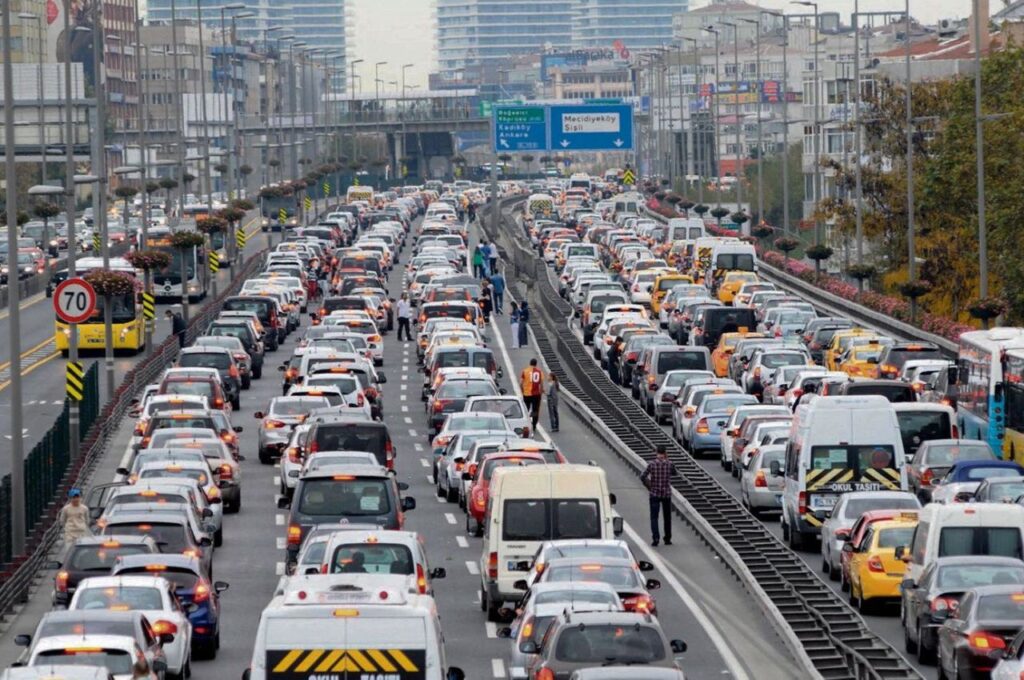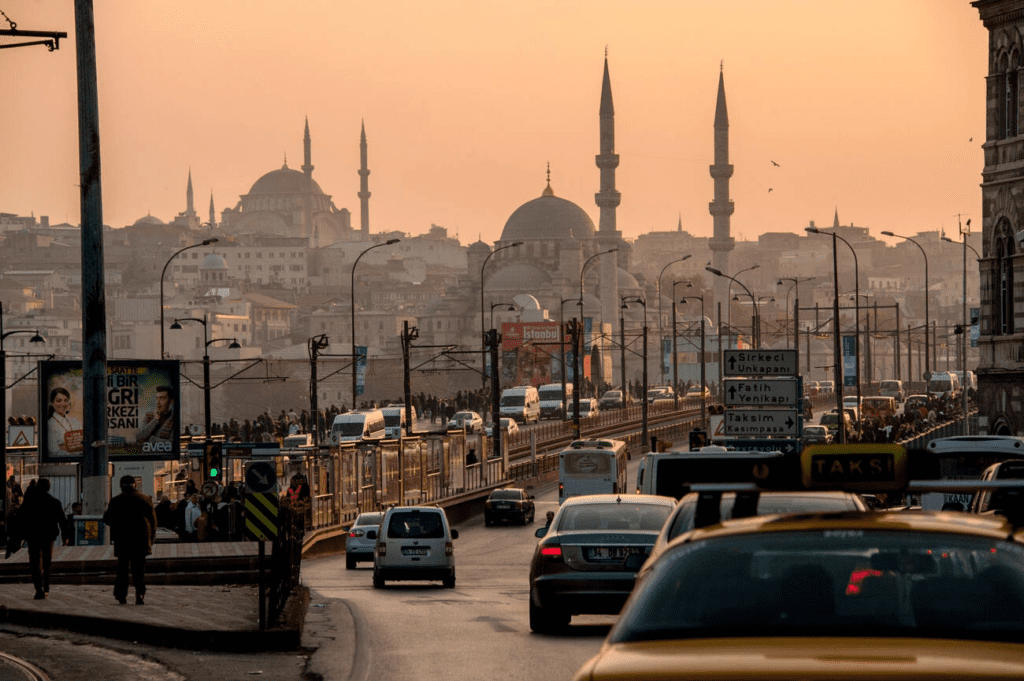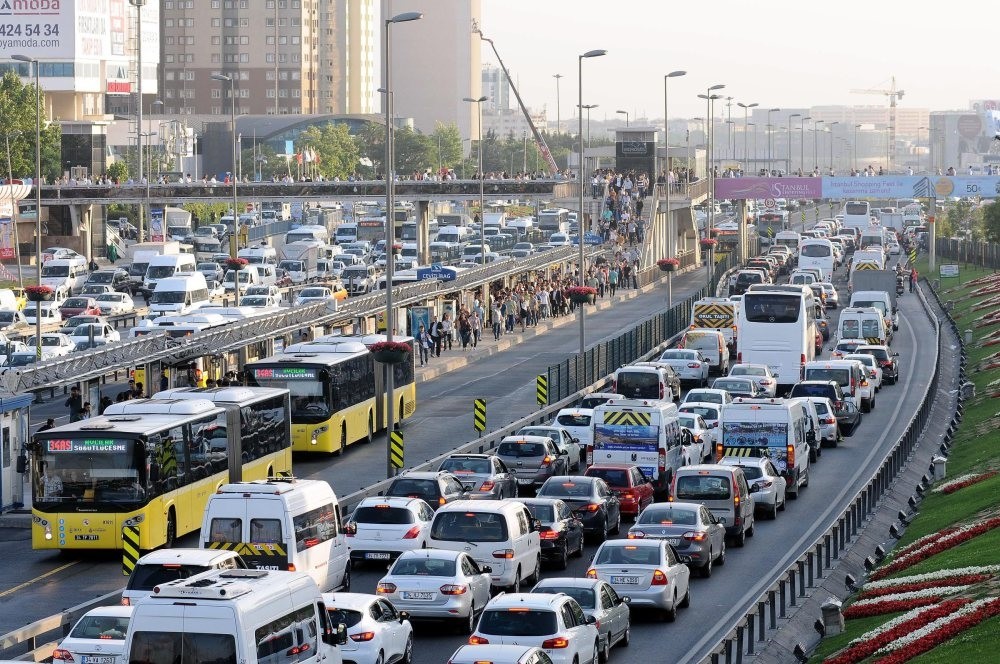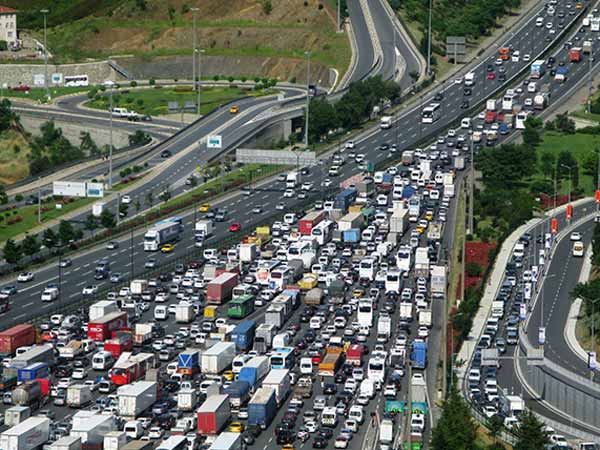Pay Once and Have Free Attractions Entry for 2, 3, 5 or 7 days
Have you ever wondered, how bad is traffic in Istanbul? Istanbul, the cultural and historical heart of Turkey, is a bustling metropolis with a population of over 15 million. Yes, no doubt, the city’s rapid growth, and expansion have led to a significant issue – traffic jams in Istanbul. With its ever-increasing population and expanding urban landscape, Istanbul has become synonymous with gridlock, leaving both locals and visitors wondering just how bad traffic can get in this sprawling metropolis. In this article, we will give you the answer to that question, and also help you to save your time and nerve by avoiding traffic jams in Istanbul.

Istanbul: Mevlevi Sema and the Whirling Dervishes Show 🌟 4.3 / 5 (2533 reviews)
Istanbul: Private Turkish Bath, Massage, and Spa in Old City 🌟 4.8 / 5 (81 reviews)
Istanbul: Taste of Two Continents Food Tour 🌟 4.9 / 5 (243 reviews)
Why Is Istanbul Traffic So Bad?
Istanbul’s unique geographical and historical landscape has contributed to its traffic problems. The city’s hilly terrain, combined with a lack of long-term urban planning, has resulted in a complex and often inefficient road network. Additionally, the preservation of historical sites and buildings has limited the options for expanding and improving the city’s infrastructure.
Expanding Population and Urbanization
The rapid growth of Istanbul’s population and urban development has put immense pressure on the city’s infrastructure. With a limited road network and increasing demand for transportation, traffic jams have become an inevitable part of daily life in Istanbul.
Bosphorus Strait: A Natural Barrier
The Bosphorus Strait, dividing the European and Asian sides of Istanbul, presents a unique challenge for the city’s traffic management. With only two bridges that are not far from the city center (the Bosphorus Bridge and the Fatih Sultan Mehmet Bridge) and one tunnel (the Marmaray) crossing the strait, the demand for crossing often exceeds capacity, resulting in significant traffic jams, especially during peak hours.
What Time is the Rush Hour in Istanbul?
Getting around Istanbul during rush hour can be a real headache. The traffic here can get pretty bad, especially in the morning after 8 AM when everyone’s heading to work. It continues at lunchtime — it’s like the whole city decides to go out for a bite at the same time. After 6 PM, it’s a race to get back home, and the roads are jam-packed with cars.

Fridays are a nightmare, especially if you’re leaving the city for the weekend. Before holidays, things get even worse as people rush to their destinations, and coming back to the city on the last day of vacation is a total traffic jam disaster.
Don’t Miss The Best Tours and Cruises in Istanbul
Discover the City without Traffic Jams: Public Transport to Unveil City Wonders
Embark on enthralling tours that masterfully employ public transport to unveil the city’s many marvels. Immerse yourself in the rhythm of local life, effortlessly traversing between landmarks and uncovering hidden gems, all while sidestepping traffic and embracing the adventure.
Read More: Skip-the-Line Tickets and Guided Tours to Galata Tower (2024)
The Most Problematic Areas with Traffic Jams in Istanbul
Bosphorus Bridge
The first Bosphorus Bridge, connecting the European and Asian sides of Istanbul, is a major chokepoint for traffic in the city. The bridge frequently experiences heavy traffic, especially during rush hours, as it is one of the few crossing points between the two continents.
Downtown and Business Districts
Traffic in Istanbul is generally bad all over the city, but downtown and business districts experience the most congestion, especially during rush hour. The peak hour traffic in Istanbul occurs between 5 and 7 p.m. on weekdays, with Friday being the worst day for traffic jams.
Kabatas to Sultanahmet

The route from Kabatas (the first tram stop) to Sultanahmet is notoriously slow-moving due to the high volume of traffic and limited road space.
Besiktas to Bebek
The coastal Bosphorus route from Besiktas to Bebek is particularly congested during summer evenings and weekends. It may take hours to travel this stretch, with traffic often coming to a standstill from Thursday to Saturday, even at 4 a.m., due to summer clubs, valet parking, and taxis.

Ortakoy-Kurucesme
In the summer, traffic between Ortakoy and Kurucesme slows to a crawl between 9 p.m. and 2 a.m. on Fridays and Saturdays because of popular summer clubs.
Coastal Bosphorus Road on European Side
On Sundays during the summer months, the coastal Bosphorus road on the European side experiences heavy traffic jams all day long.
Morning and Evening Rush Hours
Istanbul’s morning rush hour starts as early as 7 a.m. and lasts until around 10 a.m. After a brief cool-off period, traffic peaks again from 4 p.m. (when schools are out) to 9:30 p.m. Unfortunately, all-day rush hours are not uncommon, especially when accidents occur.
Find apps to check traffic jams in Istanbul >>
Ways to Avoid Traffic in Istanbul
Avoid Rush Hour
One of the simplest ways to avoid traffic in Istanbul is to plan your travel outside of the city’s peak traffic hours. As mentioned earlier, morning rush hour typically occurs between 7 a.m. and 10 a.m., while evening rush hour takes place between 5 p.m. and 7 p.m. on weekdays, with Friday being the most congested day. By scheduling your trips during off-peak hours, you can reduce the time spent in traffic and enjoy a smoother journey.

Additionally, consider exploring the city’s less congested neighborhoods and attractions during peak hours. Istanbul boasts a wealth of hidden gems and lesser-known sites that are equally fascinating and worth visiting. Opting for these alternative destinations during rush hour can help you avoid the worst of the city’s traffic jams.
Use Public Transport Options in Istanbul!
Don’t miss out on the Istanbul City Card for a stress-free and unlimited city transport experience. Choose from 1-3-5-7-15 day options to perfectly match the length of your stay, and explore Istanbul to your heart without thinking of topping up your pass.
Buy City Travel CardTrams
Istanbul’s tram system is an efficient and affordable way to traverse the city. With frequent services and stops at major tourist attractions such as Sultanahmet, Hagia Sophia, and the Grand Bazaar, trams provide a convenient and time-saving alternative to driving in traffic-prone areas.
Marmaray
The Marmaray, an undersea railway tunnel connecting the European and Asian sides of Istanbul, offers a quick and efficient way to cross the Bosphorus Strait. With stations near popular tourist destinations like Sirkeci and Üsküdar, the Marmaray provides easy access to some of the city’s most famous sites.
Metro
Istanbul’s metro system is a reliable and fast mode of transportation, with lines covering many parts of the city. Key tourist attractions, such as Taksim Square and Levent, can be reached by metro, helping you avoid the city’s notorious traffic jams.
Ferries
One of the most scenic and enjoyable ways to avoid traffic in Istanbul is by taking a ferry across the Bosphorus Strait. Ferries connect various points on the European and Asian sides of the city, offering a relaxing and picturesque journey. Enjoy the sights of the Dolmabahce Palace, Maiden’s Tower, and the Rumeli Fortress as you cruise along the Bosphorus. Read more…
Metrobus
The Metrobus, a rapid transit bus system, operates on dedicated lanes, providing a fast and reliable transportation option, especially during peak traffic hours. With stops at numerous locations across the city, the Metrobus helps passengers avoid the worst of Istanbul’s traffic.
Conclusion
Traffic jams in Istanbul are an unfortunate reality due to the city’s rapid growth, complex city structure, historical constraints, and the challenges posed by the Bosphorus Strait. However, by understanding the most problematic areas and utilizing the various public transport options available, you can navigate the city more efficiently and make the most of your time in this captivating metropolis.
FAQs
Q: How bad is traffic in Istanbul?
A: Traffic in Istanbul can be extremely challenging, especially during rush hours and in specific congested areas. However, by using public transportation and avoiding peak times, it is possible to circumvent the worst of the traffic jams.
Q: What are the rush hours for traffic in Istanbul?
A: Rush hour traffic in Istanbul typically occurs between 5 and 7 p.m. on weekdays, with Friday being the worst day for congestion. Morning rush hour usually starts around 7 a.m. and lasts until 10 a.m.
Q: What are the best public transportation options to avoid traffic in Istanbul?
A: The best public transportation options to avoid traffic in Istanbul include trams, the Marmaray, metro, ferries, and the Metrobus.
Q: Why is traffic in Istanbul so bad?
A: Traffic in Istanbul is primarily due to the city’s rapidly expanding population, complex city structure, historical constraints, and the challenges posed by the Bosphorus Strait.
Q: What are the most problematic areas for traffic in Istanbul?
A: The most problematic areas for traffic in Istanbul include the Bosphorus Bridge, downtown and business districts, the route from Kabatas to Sultanahmet, the coastal Bosphorus route from Besiktas to Bebek, and the Ortakoy-Kurucesme area during summer evenings and weekends.
You Might Be Interested in
- Best Food Delivery Apps in Istanbul: How to Order Food In
- Istanbul in May: Weather & Things to Do, Events in 2024
- April Weather in Istanbul: The Ultimate Guide for Travelers (2024)
- How to Make Turkish Coffee: Step-by-Step Recipe
- Explore Maltepe in Istanbul (Asian Side): Things to Do & See, Hotels, Restaurants (2024)
- Traveling in Istanbul with a Baby: Places to See and Tips for a Pleasant Vacation
- Istanbul Ruines and Constantinopol Sites: A Journey Through Byzantine History
- Galata Tower in Istanbul: Entrance Fee, Opening Hours, History & What to See (2024)
- Istanbul Archaeological Museums: Museums, Tickets, Opening Hours (2024)
- 8 Best Taksim Square Hotels in Istanbul from Luxury to Budget (2024)
Don’t Miss The Best Tours and Cruises in Istanbul